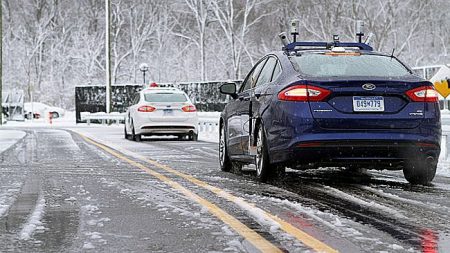September 26, 2018 – My Toyota RAV4 Hybrid is packed with all kinds of sensors including cameras and software that gives me a wraparound view of my vehicle on demand, tells me if I am backing up if there is traffic behind, warns me when there are pedestrians, bicycles, and cars nearby, and even alerts me when I am tired to take a break. It’s impressive. But one thing my RAV cannot do is feel the road. That’s something human drivers do when they drive in a snowstorm, or on ice, on a road made slick by rain, or when driving in heavy winds or with a heavy load aboard. My RAV can’t hear the engine should it suddenly rev up or down. But that’s something I can sense and something to which I can respond by adjusting my driving behaviour.
A Haifa-based company, Tactile Mobility, formerly known as Mobi-Wize, intends to make future autonomous vehicles tactile and sensory smart. It launched in an announcement today, its tactile sensing and data analytics software along with agreements for five proof-of-concept trials planned with North American and European automobile manufacturers. Amit Nisenbaum, who recently has joined the company as CEO, describes Tacticle Mobility’s value proposition:
“When you drive you can feel the tires as they slip on ice, or sense the engine is having trouble despite it not registering with your car’s vision-based electronic systems…This missing tactile sense is a major hurdle in the development of advanced and autonomous vehicles and a significant limitation when it comes to mapping road condition data that has been ignored until now.”
This represents an important technology enhancement in the five-stage process that marks the evolution of vehicle autonomy. If you are unfamiliar with what these stages are here is a quick summary:
Stage 1: Autonomy features such as adaptive cruise control (My RAV has this).
Stage 2: Automatic braking and correcting lane drift as well as fully autonomous parking. (My RAV has the first two but not the third).
Stage 3: Autonomy where the vehicle handles all driving functions related to navigating on a highway. At any point, a person in the driver seat can take control.
Stage 4: Autonomy that allows vehicles to navigate in a complex urban setting without driver assistance, although a person in the driver seat can take control when needed.
Stage 5: Autonomy where no driver seat exists as well as no steering wheel, accelerator, or brake pedal. All who enter the vehicle are passengers.
Tactile Mobility’s technology is of value at all five stages collecting crucial, real-time non-visual sensory data that tracks wheel speed, wheel angle, engine RPMs, automatic transmission paddle position, gear position, and more, analyzing all this information to yield actionable insights. Tactile Mobility’s software feels the road, senses the drive as it is affected by vehicle weight distribution, the quality of the road surface, and by the grip of the tires.
The software is vehicle agnostic, that is, it can be implemented with almost any manufacturers’ brand. I suspect we will be hearing about tactile data intelligence in future models of vehicles as these companies accelerate their plans to bring full autonomy to the world’s roads.








